The primary (really only) reason we visited Peru was to trek the Inca Trail to Machu Picchu. Still, I wanted to try to see as much as was possible and healthy in our nine days in the country. We spent about three of those days acclimating to altitude in Cusco. Then, four days hiking the Inca Trail, followed by a day in Aguas Calientes with a second Machu Picchu entry + Huayna Picchu climb. This left us with one day to explore the capital of Peru: Lima.
With just one day to explore, we decided we wanted to see as much of the city as possible and opted for a day tour to see the highlights. Though we typically prefer to travel more independently, we’ve come to really appreciate tours under the right circumstances. In this case, we only had about eight hours to see Lima. It was worth it to have a tour guide and driver to show us the major highlights of such a big city.
Without further ado, here is our full-day tour of Lima, Peru:
Stop 1: Plaza San Martin
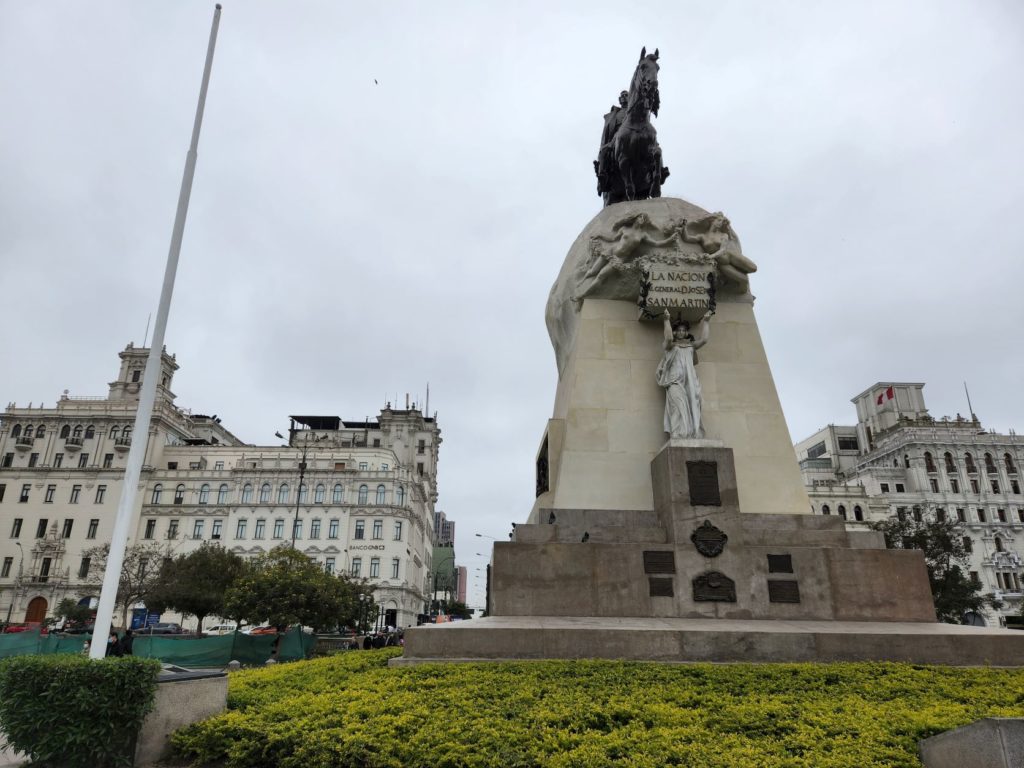
We actually started the day in Cusco with an early-morning flight to Lima. It only took about an hour and a half, and we were there before we knew it. We didn’t want to haul our backpacks around the city on our tour, but we were luckily able to store them at Lima airport. After deplaning at the domestic arrivals section, we exited and walked over to the international departures area where we found a counter to leave our bags. (Tip: This baggage check is cash-only, so make sure to have soles on hand to pay.)
Because we had arranged a private full-day city tour, Haku Tours picked us up at the airport and took us to our first stop on the tour: Plaza San Martin.
Here, we met our tour guide. Like other tour guides in the country, she studied in college to be a guide in Peru. She taught us about the history of the plaza, located in Lima’s Historic Center. A statue of Jose de San Martin stands in the center of the plaza. He liberated Peru from Spanish colonialism. His statue holds a torch with a llama on top due to a funny translation mishap. The instructions for the statue said he was holding a “llama” as in the Spanish word for “flame.” However, the person who made the statue assumed it meant llama as in the animal.
Stop 2: Centro Histórico (Historical Center) Main Square
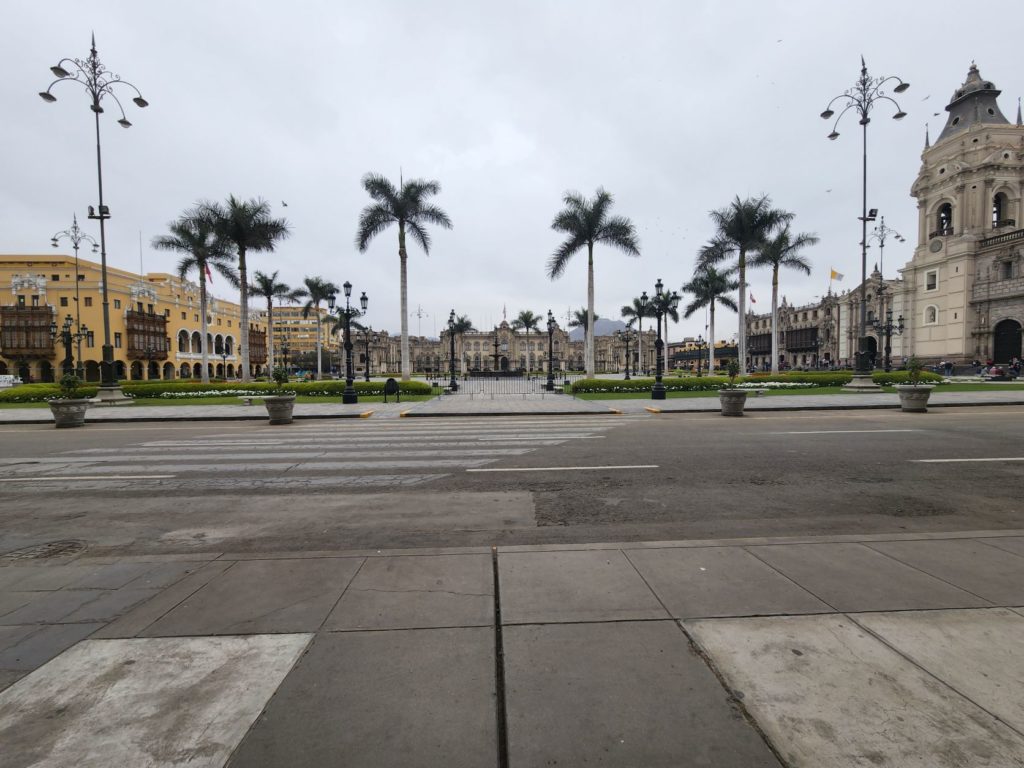
Our second stop was the Main Square of the Historical Center. First, we visited the San Francisco Monastery and its underground catacombs. Out guide led us on a tour of the monastery and learned about the dark history behind its artistic construction. Indigenous Peruvians had to give their first-borns to the church who labored to create paintings and carvings for the church. Then, we visited the catacombs. They were filled with bones from past burials.
After the catacombs, we took a quick lunch break then were back on our way. We strolled through the streets of the Main Square and learned the high doorways were due to carriages the Spanish royals used to ride into their buildings.
Then, it was time for churros. They say that if you go to Lima’s Historic Center and don’t get a churro, it is like going to Cusco and skipping Machu Picchu.
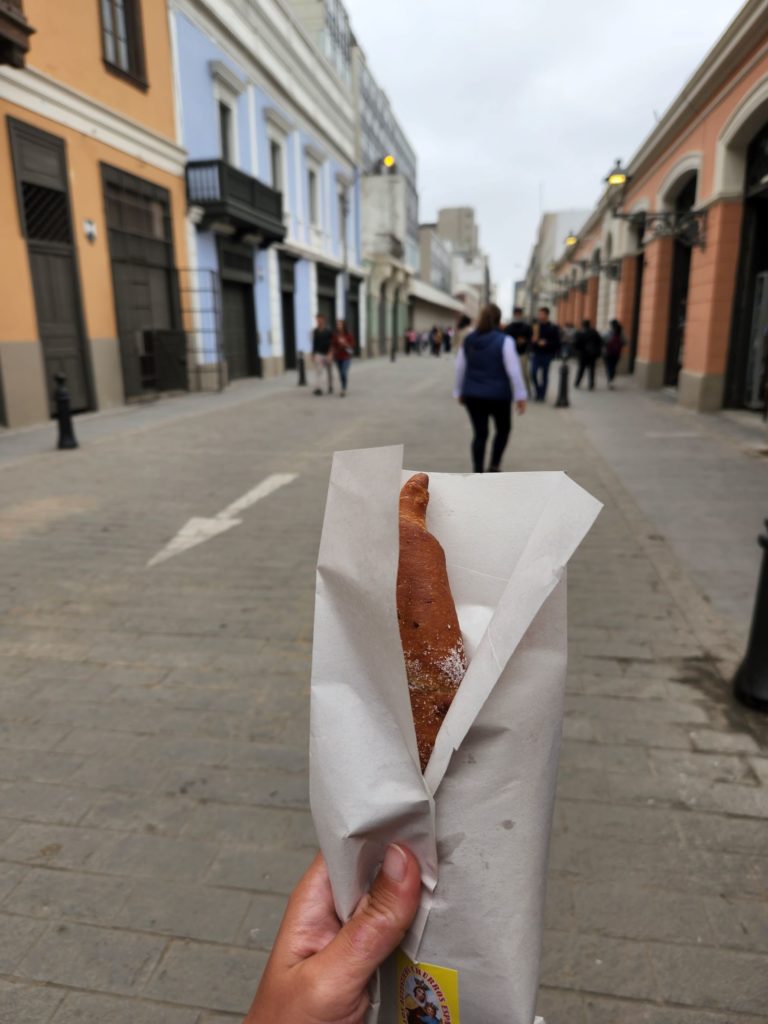
The Historic Center of Lima makes a specific type of churro that is different from typical churros. As the story goes, the people who lived in the Historic Center wanted to make churros, but didn’t have the machine for traditional ones. So, they made their own churro shell. You can get them all over the square, filled with creamy caramel.
Stop 3: Miraflores – Parque Kennedy & Parque del Amor
Our next stop after the Historic Center was Miraflores. This neighborhood is among the most popular with tourists. It’s considered safe and beautiful, and has a lot to do. Here, we visited two popular parks.
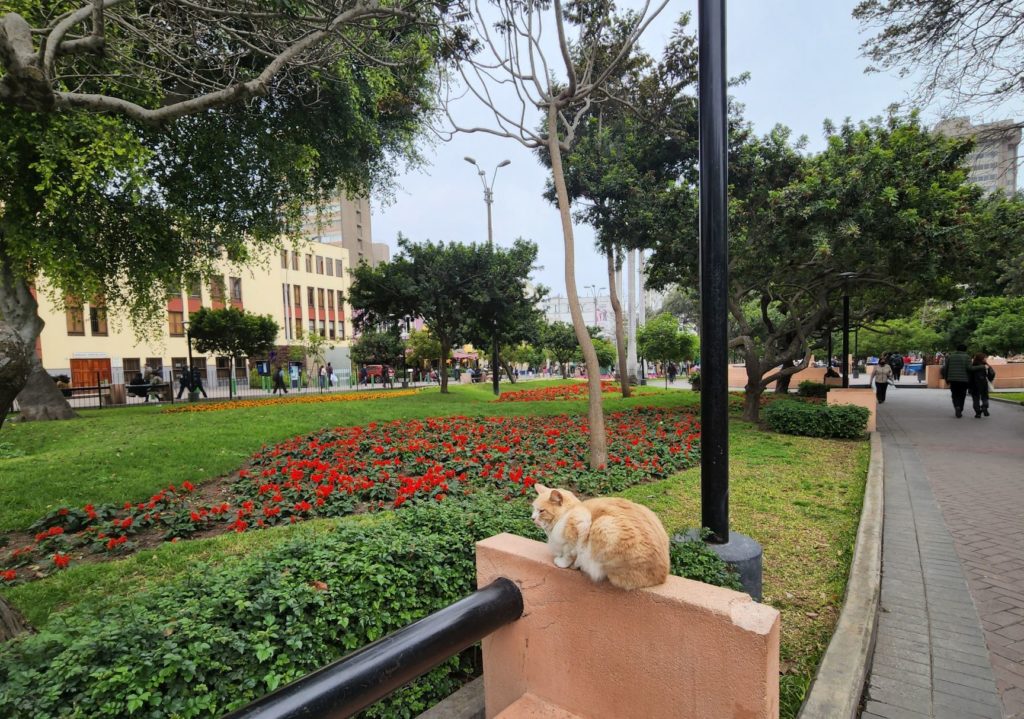
The first as Parque Kennedy, named for the US president John F. Kennedy due to the Alliance for Progress he oversaw in Latin America. Parque Kennedy is a beautiful green space in the middle of a busy city with dozens of cats. Our tour guide told us the cats were brought into the park originally to take care of a rat problem. However, no one expected how much the cats would multiply. Nowadays, they roam the park freely and are taken care of and fed. Some even let tourists pet them.
The next park we went to in Miraflores was Parque del Amor (Love Park). Apparently, the park used to be the darkest spot in the city, and lovers would go there to make out. To spruce up the park and give a nod to its past, there is a giant statue of two people kissing, and colorful tiles around the walls of the park. The park itself also overlooks the ocean.
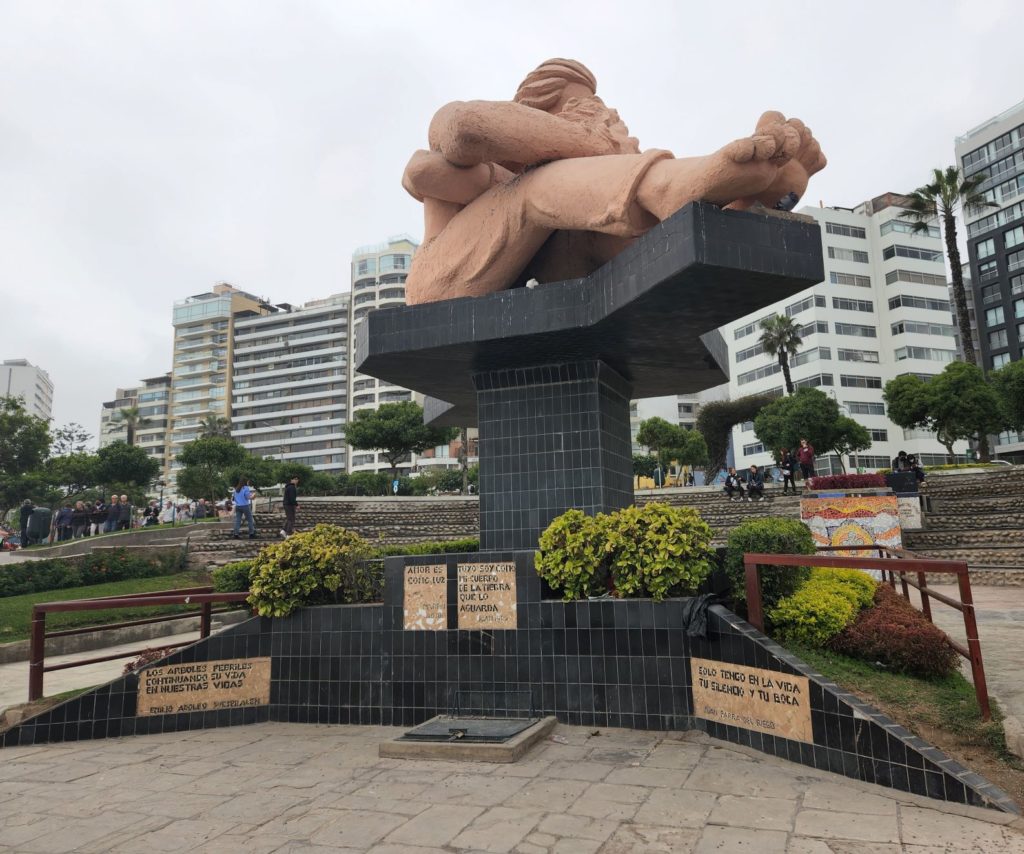
Stop 4: City Overlook in the Chorrillos District
After Miraflores, we drove over into the Chorrillos District and up to Morro Solar. Morro Solar also has historical significance as the site of the Battle of San Juan and Chorrillos, where Peruvian and Chilean forces met in 1881. We learned a bit more about the war and historical tensions between Peru and Chile.
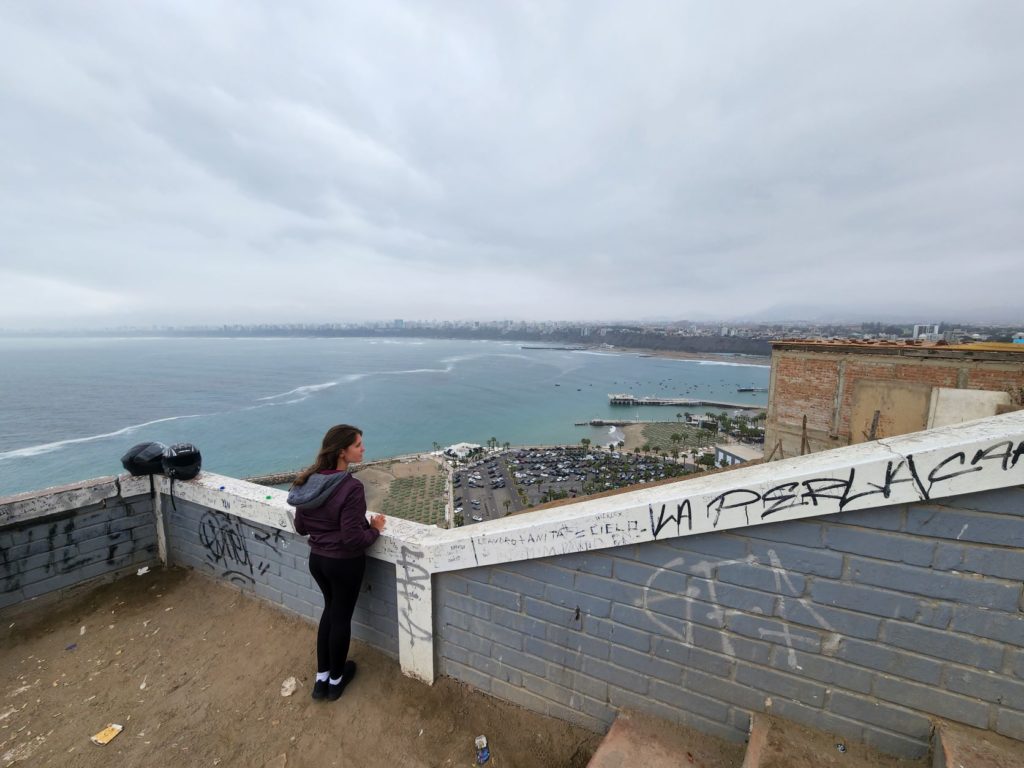
We drove past the monument to an unknown soldier and astronomical tower to look out over the entire city of Lima. From this view point, we could see the entire sprawling city of Lima, and the Pacific Ocean.
Stop 5: Market with local fruit tasting
From the Chorrillos District, we went to the Surquillo District to tour a local market. This stop was one of my favorites on the tour. We learned from our tour guide that Peruvians typically shop for food and staples at these open air markets rather than supermarkets, which explained why we didn’t see many grocery stores in Cusco or Aguas Calientes.
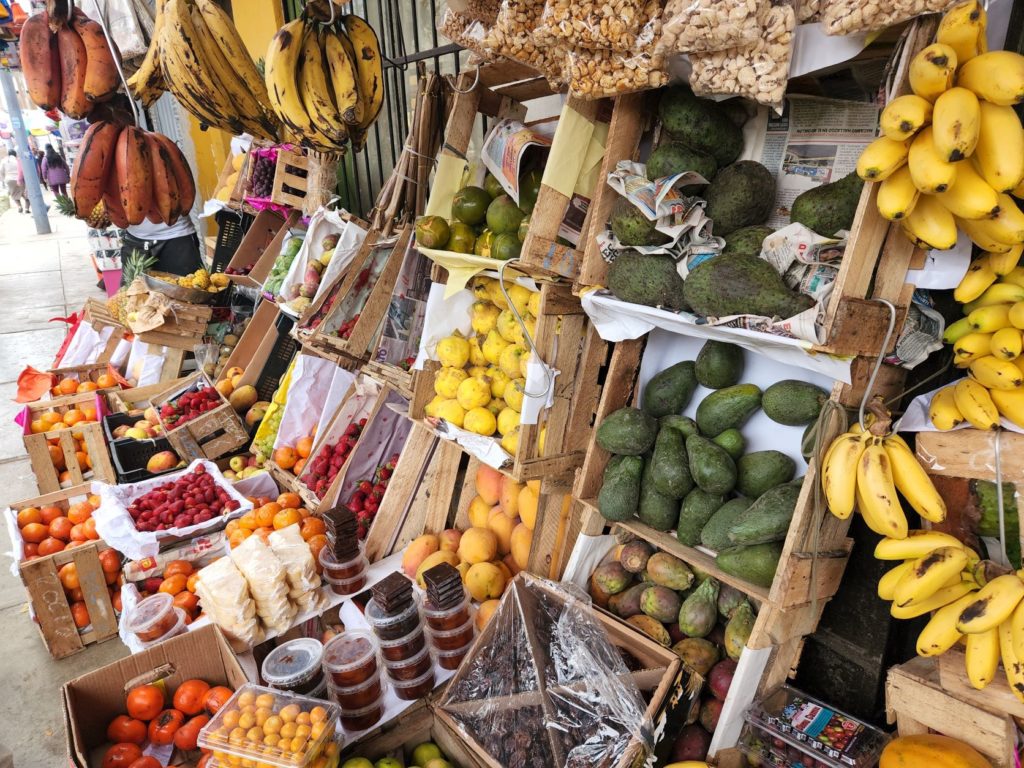
We first stopped at a vendor to taste local fruits. The highlights were the sweet and sour versions of passionfruit, which were juicy and full of flavor. I also liked the small, red bananas. My least favorite was a locally-grown lemon, which was very bland.
The rest of our time was spent wandering around the market, taking in the sights, sounds and general vibe of the families shopping.
Stop 6: Barranco (art district)
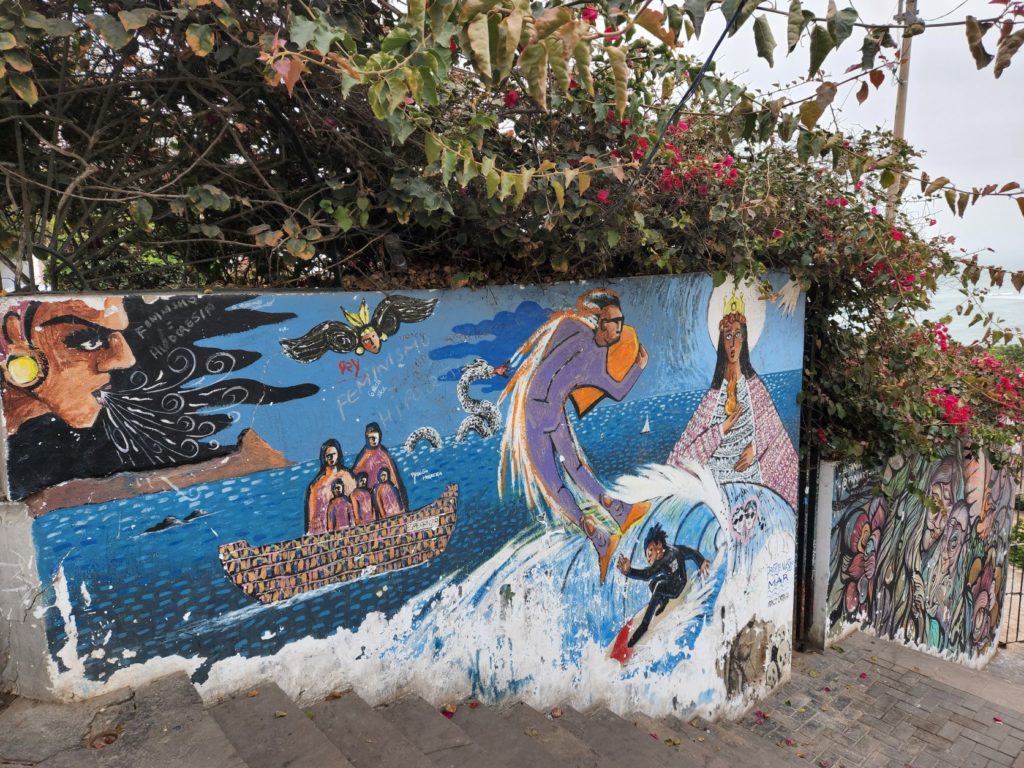
Next, we visited another popular tourist neighborhood called Barranco. This neighborhood is known as the artsy neighborhood, with murals and art galleries throughout the area. We walked through this neighborhood to view several interesting murals.
We also visited a small art gallery showing a local Peruvian artist’s work. He has murals around the world, showcased throughout the gallery.
Stop 7: Craft market
We were nearing the end of our tour but couldn’t head home without some souvenirs. Before heading to the airport, we stopped by the Inka Market, a local craft market filled with Peruvian souvenirs. We picked up some trinkets for our nieces and nephews and were on our way.
The tour guide took us back to the airport and gave us a couple of small mementos. We retrieved our backpacks from the baggage check-in counter in the international arrivals area at the Lima airport, then headed to our gates to return to the US.
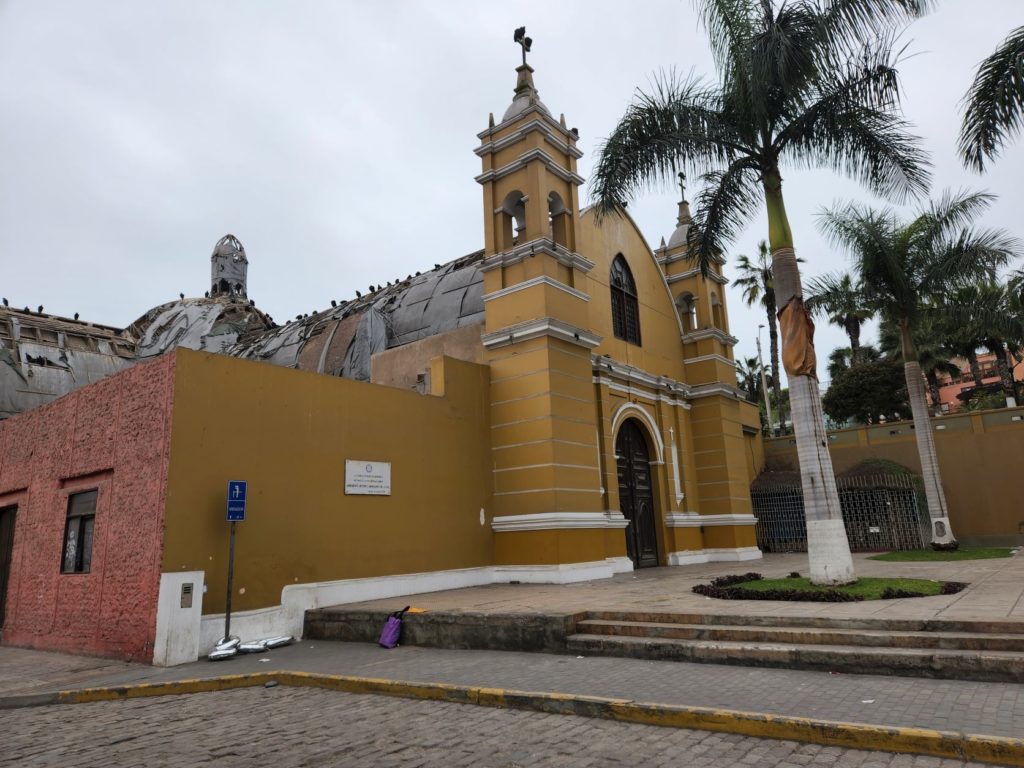
How I chose the tour company:
The city tour gave us an excellent taste of the city of Lima and an intro to its highlights. I reached out to a few different companies that offered tours of Lima highlights. Ultimately, I chose Haka Tours for a few reasons:
- Locations visited: A few places I wanted to see in Lima were Parque Kennedy, art murals in Barranco, Centro Historico and a local market, all of which were covered in the Haku Tours itinerary
- Pick-up and drop-off: Because we were arriving in Lima at 10 a.m. and departing at midnight, we weren’t staying in the city anywhere overnight. Most tours picked up in a spot in Miraflores or Barranco, but an airport pick-up and drop-off made our trip a lot smoother.
- Timing: Most other companies felt like the tours were too short or lasted too long for our needs.
- Community involvement: Haku Tours also employs local Peruvians and gives back to communities in need around Lima. Our tour guide was born and raised in Lima and had a lot of insight into the city and culture.
I hope to go back one day and get to know Lima even better. Have you been to Lima? What did I miss?

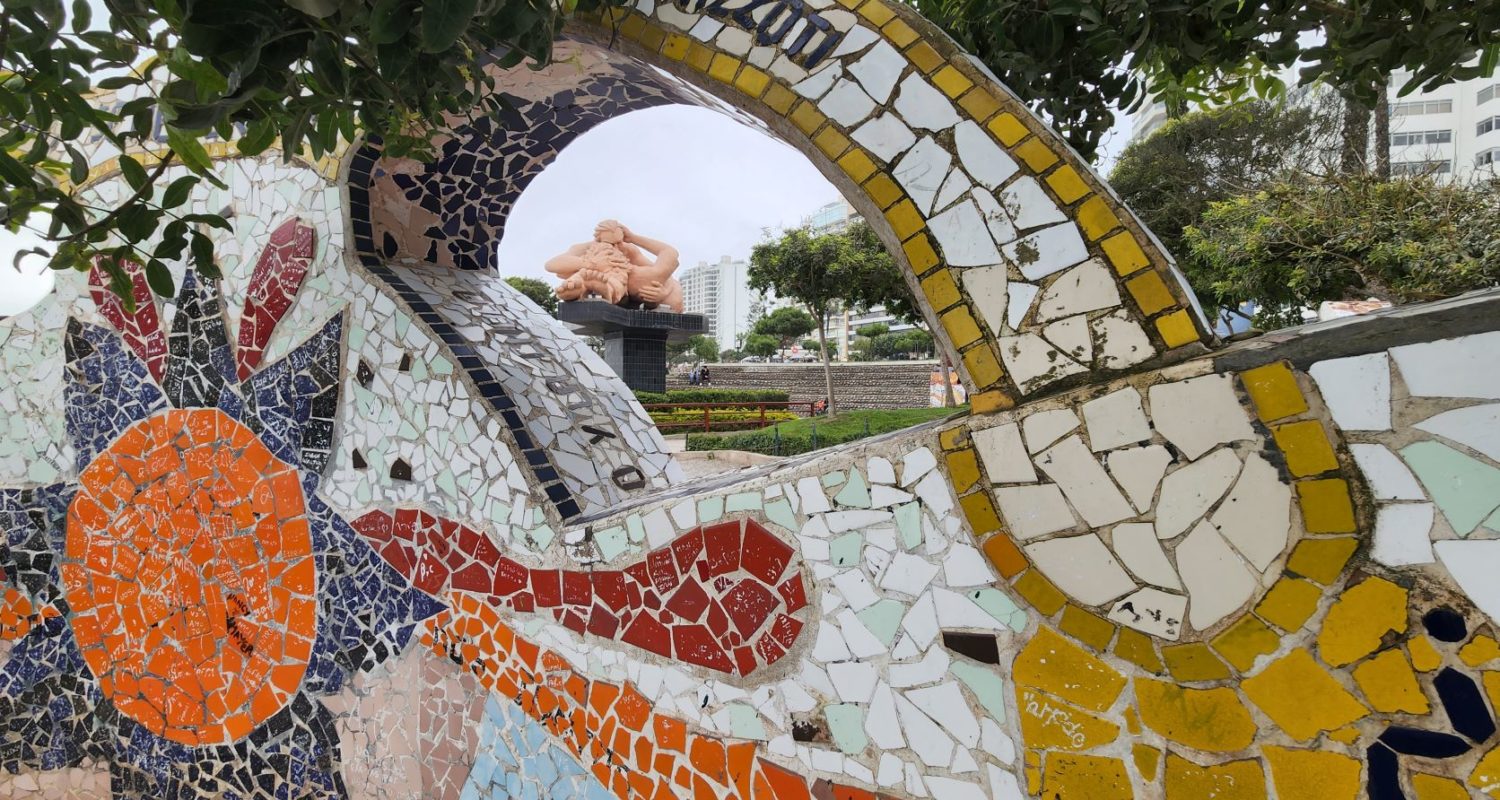
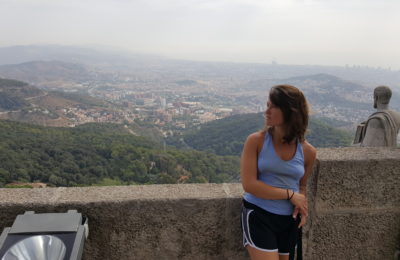
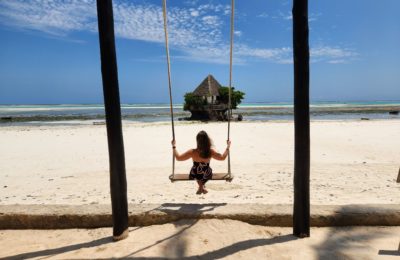
2 thoughts on “Lima: How To See The Highlights Of Peru’s Capital In Just One Day”